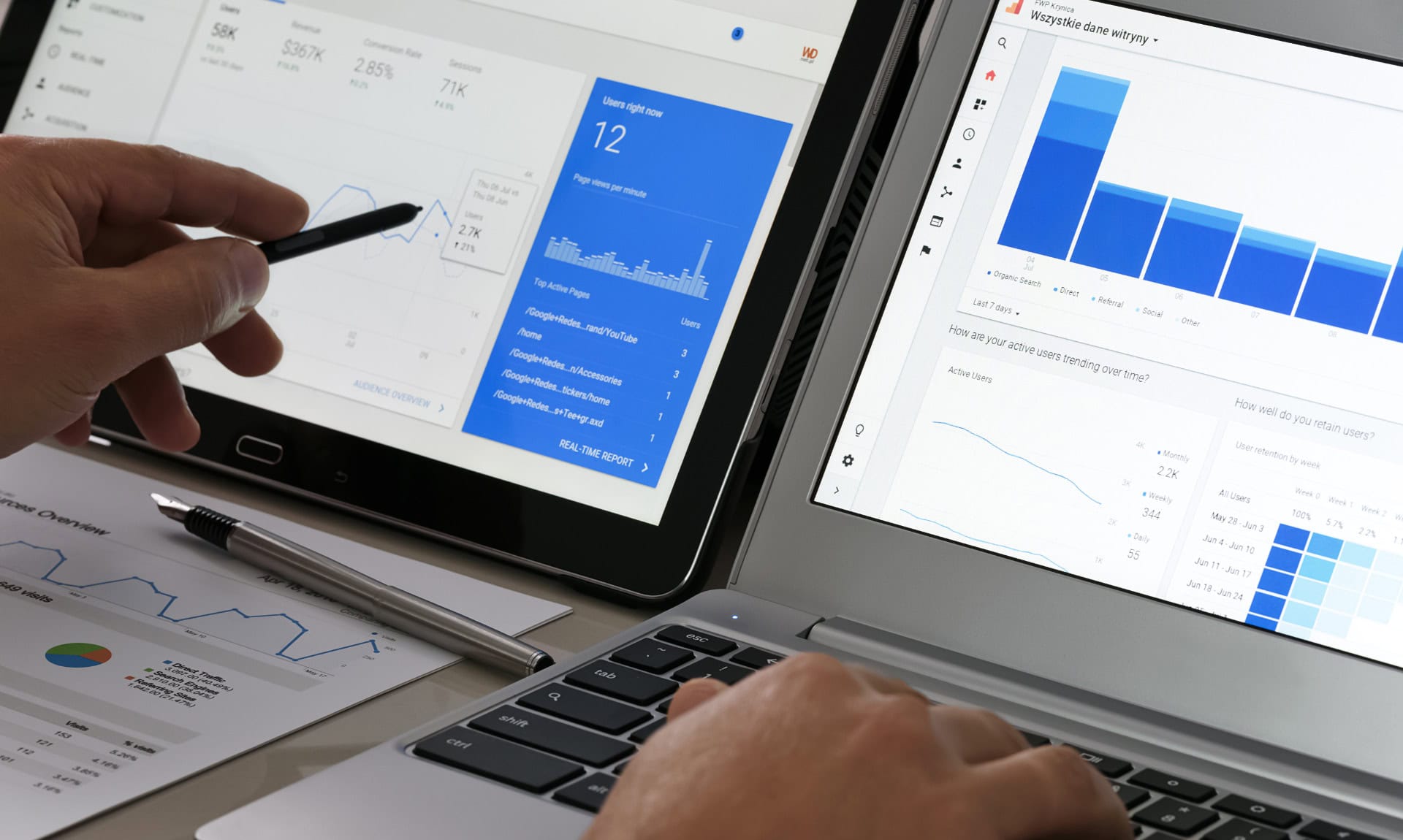
Demand Side Platform (DSP): What Is It & How Does It Work?
Demand side platforms (DSPs) have revolutionized digital advertising by enabling marketers to manage and optimize campaigns with precision. Understanding what a DSP is and how it works is crucial for leveraging its full potential.
This article explores DSP advertising, highlighting its benefits and operational mechanics.
What Is a Demand Side Platform?
A demand side platform (DSP) is a software system that allows advertisers to buy digital ad inventory across multiple exchanges through a single interface.
As part of the programmatic advertising ecosystem, it uses automated processes, including real-time bidding, to purchase ad placements efficiently. DSPs enable advertisers to target specific audiences and optimize their campaigns based on performance data.
DSPs vs Supply Side Platforms
A supply side platform (SSP) is a software system used by publishers to manage, sell, and optimize their available ad inventory.
Unlike SSPs, which focus on maximizing revenue for publishers, DSPs are used by advertisers to purchase ad inventory and target specific audiences effectively.
- Learn More: DSP, SSP, and Ad Exchange: What’s The Difference?
DSPs vs Data Management Platforms
A data management platform (DMP) is a software system that collects, stores, and analyzes data from various sources to create detailed audience profiles.
While DMPs focus on aggregating and managing data for better audience insights, DSPs use this data to execute and optimize ad buying decisions in real-time.
Demand Side Platform Benefits
Demand side platforms offer several key benefits that enhance digital advertising strategies.
1. Centralized Campaign Management
DSPs provide a single interface to manage campaigns across multiple ad exchanges and ad networks. This centralized approach simplifies the process, saving time and effort for advertisers.
2. Advanced Targeting Capabilities
DSPs allow advertisers to target specific audiences based on demographics, interests, and behaviors. This precision targeting increases the likelihood of reaching the right consumers at the right time.
3. Real-Time Bidding Efficiency
With real-time bidding (RTB), DSPs enable advertisers to bid for ad impressions as they become available, ensuring optimal ad placements. This efficiency helps in maximizing the effectiveness of ad spend.
4. Comprehensive Analytics and Reporting
DSPs provide detailed analytics and reporting tools to track campaign performance and insights. These tools help advertisers make data-driven decisions to optimize their strategies continuously, making DSPs ideal for performance marketing campaigns.
5. Cost-Effective Advertising
By automating the ad buying process and leveraging real-time data, DSPs help advertisers achieve better results at lower costs. This cost efficiency ensures a higher return on investment (ROI) for digital advertising campaigns.
How Do Demand Side Platforms Work?
Understanding how demand side platforms work is essential for maximizing their potential in digital advertising. The basic step-by-step process looks like this:
- Step 1 – Integration with Ad Exchanges: DSPs connect to multiple ad exchanges and supply side platforms (SSPs) to access a vast pool of ad inventory.
- Step 2 – Audience Data Utilization: DSPs use audience data from data management platforms (DMPs) and other sources to define targeting parameters for campaigns.
- Step 3 – Real-Time Bidding (RTB) Participation: When a user visits a website or app, an ad impression becomes available and the DSP participates in a real-time auction to bid for that impression.
- Step 4 – Algorithmic Bidding: The DSP employs algorithms to determine the optimal bid price for each impression based on targeting criteria and campaign goals.
- Step 5 – Ad Placement: If the DSP wins the bid, the ad is instantly served to the user on the publisher’s site or app. All of this happens in a fraction of a second.
- Step 6 – Performance Tracking: The DSP continuously tracks and analyzes the performance of ad placements, collecting data on impressions, clicks, conversions, and other key marketing metrics.
- Step 7 – Campaign Optimization: Using the performance data, the DSP adjusts bidding strategies and targeting parameters to improve campaign outcomes and achieve better ROI.
How Does Targeting Work In a DSP?
Targeting in a DSP is a sophisticated process that ensures ads reach the most relevant audiences.
- Demographic Targeting: Focuses on attributes such as age, gender, income, and education level, allowing advertisers to tailor their messages to specific segments of the population.
- Geographic Targeting: Targets users based on their location, from broad regions like countries down to specific areas like zip codes, enabling localized advertising efforts.
- Behavioral Targeting: Utilizes data on users’ online behavior, such as browsing history, purchase patterns, and previous interactions, to deliver ads that match their interests and actions.
- Contextual Targeting: Places ads on web pages with content relevant to the product or service being advertised, ensuring that the ad contextually fits with the user’s current interests.
- Device Targeting: Targets users based on the devices they use, such as mobile phones, tablets, or desktops, allowing for optimization of ad formats and content for different screens.
- Interest-Based Targeting: Leverages data on users’ interests, such as hobbies, activities, and preferences, to show ads that align with their passions and pursuits.
- Retargeting: Shows ads to users who have previously interacted with the brand’s website or app, encouraging them to return and complete desired actions, such as making a purchase or signing up for a service.
How Do Demand Side Platforms Make Money?
Demand side platforms make money primarily through service fees and commissions on ad spend. They charge advertisers a percentage of the total media budget or a flat fee for using their platform to manage and optimize ad campaigns.
Additionally, DSPs may earn revenue from data partnerships and premium features that offer advanced targeting and analytics capabilities.
Demand Side Platform Examples
Demand side platforms are essential tools in digital advertising, and several major companies operate DSPs.
Is Amazon a DSP?
Yes, Amazon is a DSP. It offers Amazon DSP, which allows advertisers to programmatically buy display and video ads across Amazon’s sites and other high-quality inventory.
Is Google a DSP?
Yes, Google is a DSP. Google’s DV360 (Display & Video 360) enables advertisers to buy and manage programmatic ads across a wide range of inventory, including YouTube and Google’s ad network.
Is Facebook a DSP?
No, Facebook is not a DSP. While Facebook offers extensive advertising solutions, it operates as a walled garden, providing its own platform for ad buying without connecting to external ad exchanges.
Other DSP Examples
Several other major DSPs provide unique capabilities and features:
- The Trade Desk: Known for its powerful data integration and advanced targeting options, making it a favorite among many large-scale advertisers.
- MediaMath: Offers a comprehensive suite of tools for programmatic buying, data management, and analytics.
- Adobe Advertising Cloud: Integrates with other Adobe products, providing a seamless experience for marketers using the Adobe ecosystem.
- Xandr (formerly AppNexus): Provides robust programmatic buying capabilities and is known for its transparency and flexible platform.
- Basis (formerly Centro): Focuses on simplifying programmatic advertising with an intuitive interface and comprehensive campaign management tools.
- Criteo: Specializes in retargeting and personalized advertising, leveraging extensive data to deliver highly relevant ads to users.
- StackAdapt: Known for its focus on native advertising and advanced machine learning algorithms to optimize campaign performance across various channels.
Demand Side Platform Advertising: Final Thoughts
Demand side platforms have transformed the digital advertising landscape by offering sophisticated tools for targeting, bidding, and campaign optimization. By understanding what a DSP is and how it works, marketers can leverage these platforms to achieve precise audience targeting and cost-effective advertising.
News Via Inbox
Get our monthly report on all the latest and greatest trends in digital marketing.



